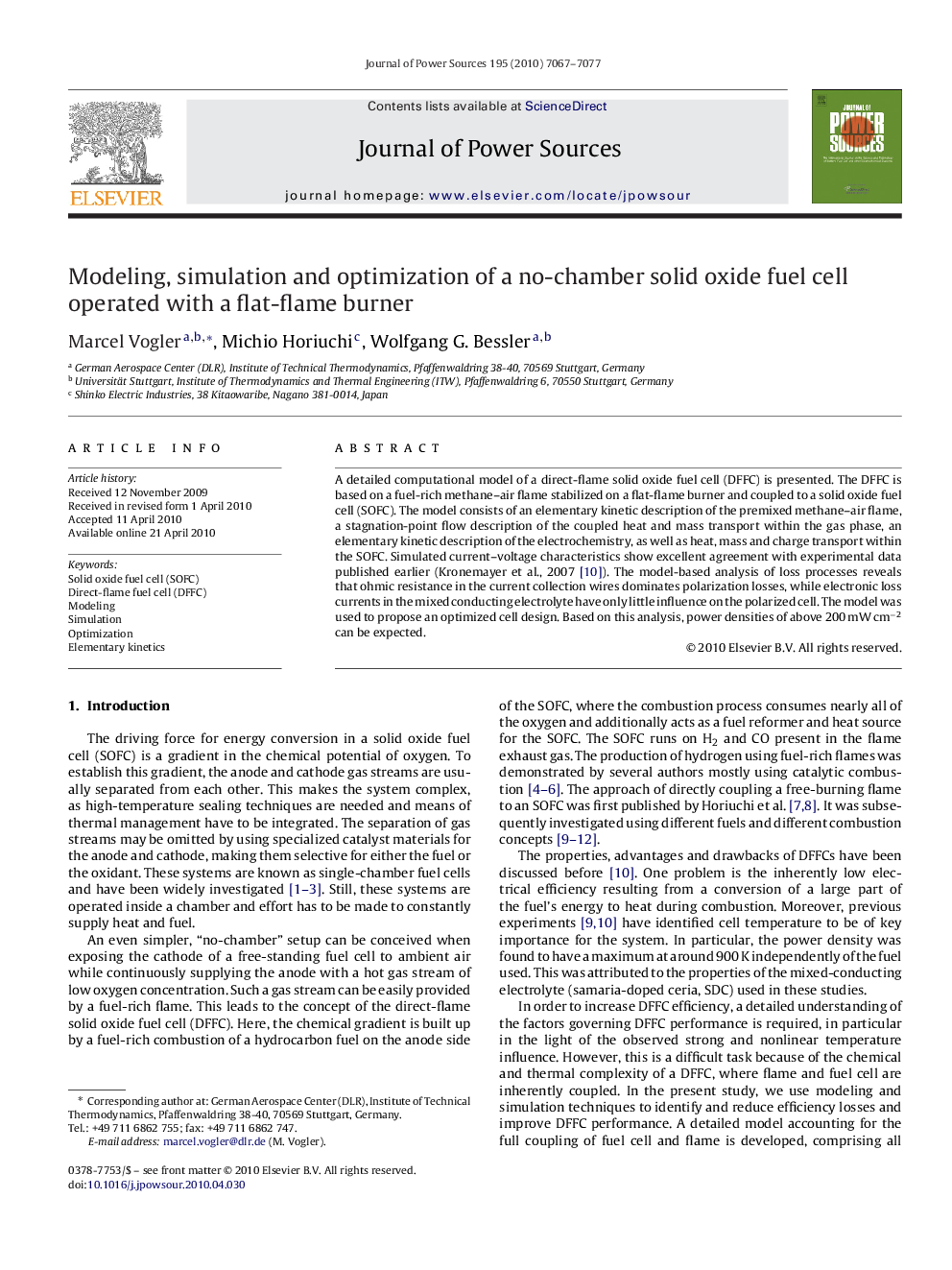| Article ID | Journal | Published Year | Pages | File Type |
|---|---|---|---|---|
| 1289217 | Journal of Power Sources | 2010 | 11 Pages |
A detailed computational model of a direct-flame solid oxide fuel cell (DFFC) is presented. The DFFC is based on a fuel-rich methane–air flame stabilized on a flat-flame burner and coupled to a solid oxide fuel cell (SOFC). The model consists of an elementary kinetic description of the premixed methane–air flame, a stagnation-point flow description of the coupled heat and mass transport within the gas phase, an elementary kinetic description of the electrochemistry, as well as heat, mass and charge transport within the SOFC. Simulated current–voltage characteristics show excellent agreement with experimental data published earlier (Kronemayer et al., 2007 [10]). The model-based analysis of loss processes reveals that ohmic resistance in the current collection wires dominates polarization losses, while electronic loss currents in the mixed conducting electrolyte have only little influence on the polarized cell. The model was used to propose an optimized cell design. Based on this analysis, power densities of above 200 mW cm−2 can be expected.
